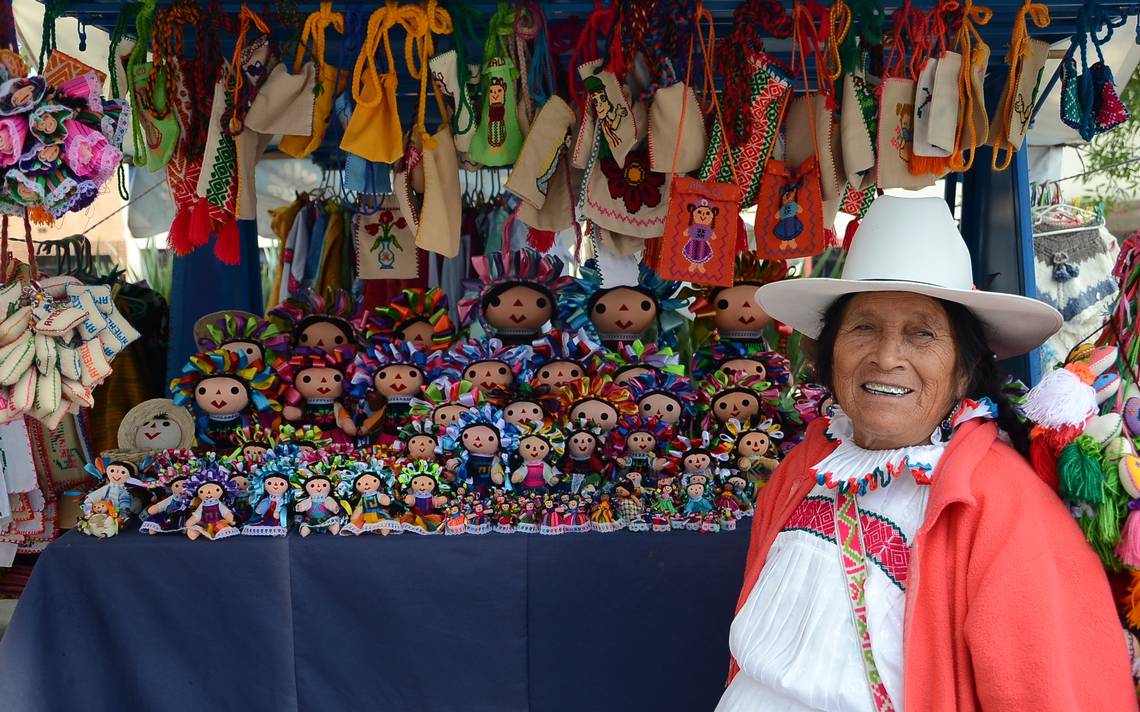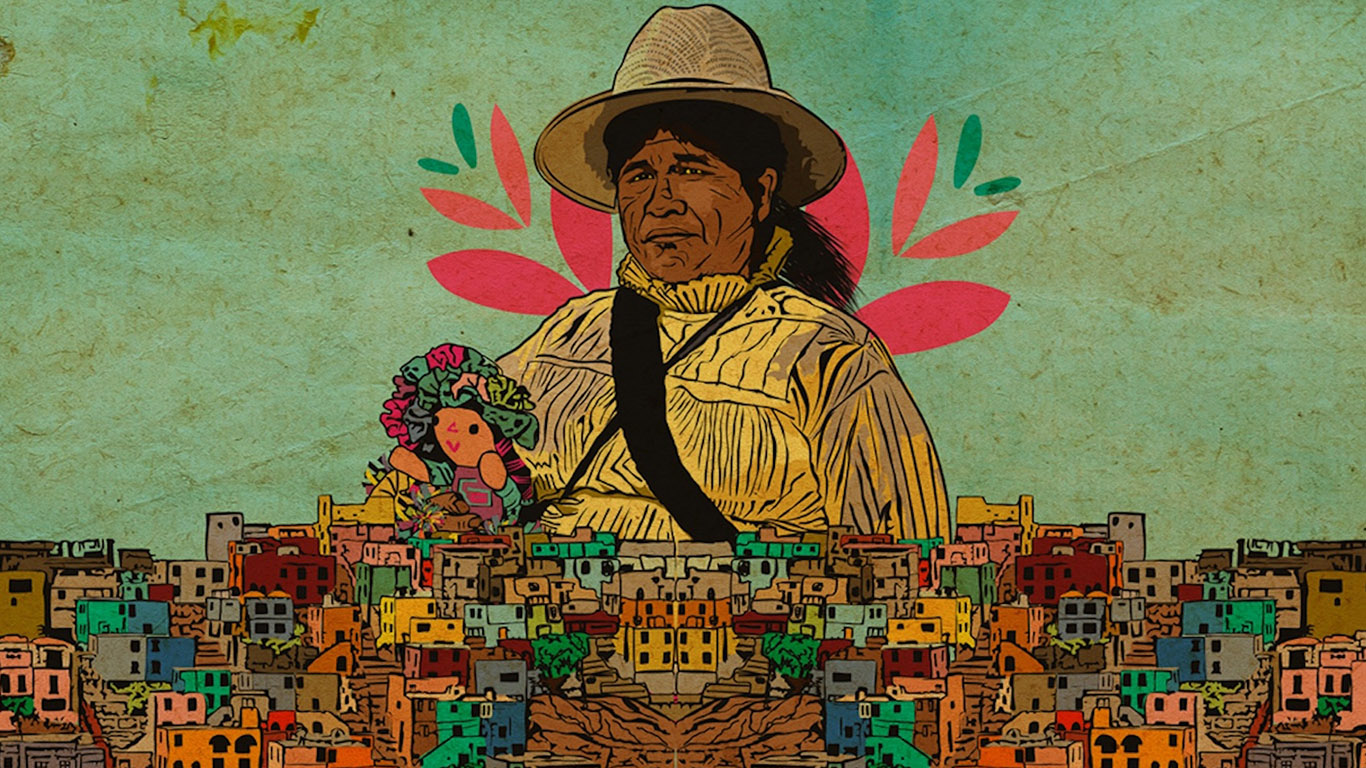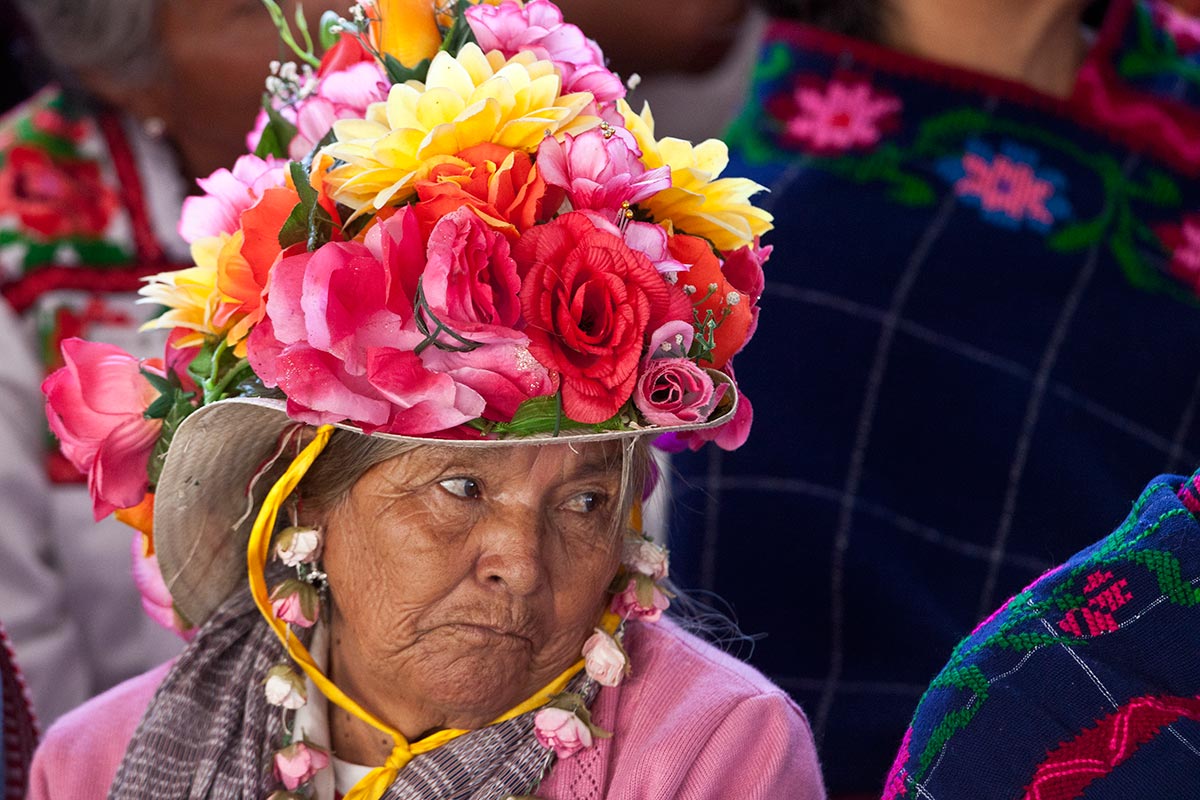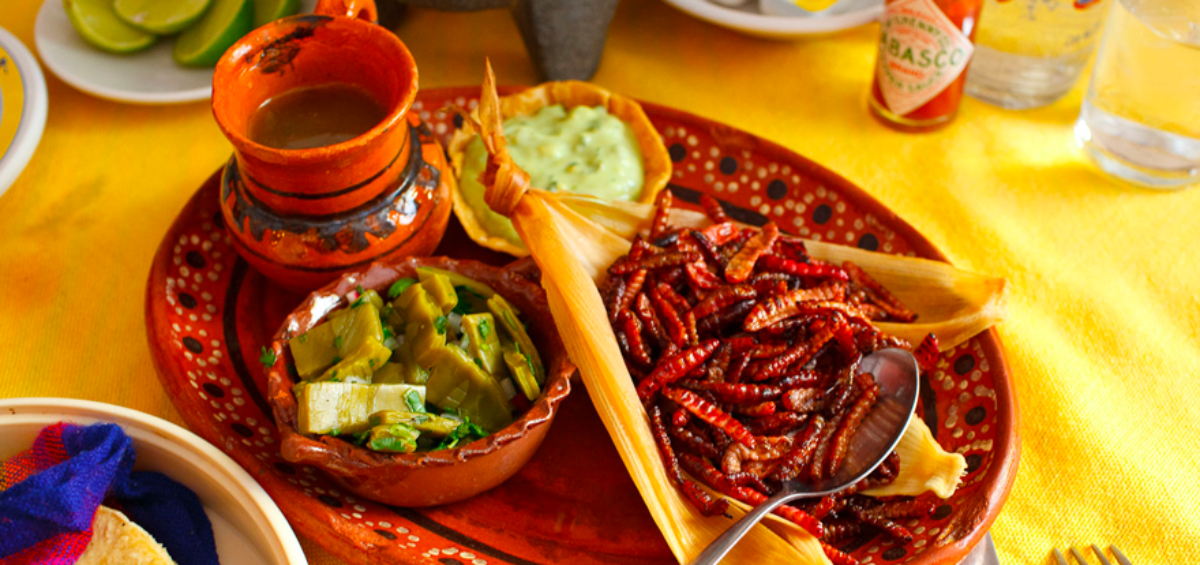The native cultures of America have bequeathed to subsequent generations beautiful traditions and customs, worth remembering and preserving over time. Such is the case of the millennial Otomi culture, coming from Mexican lands and that in this article we are going to describe in detail. Don't stop reading it!

Otomi culture
This ancient culture of the central Mexican territories keeps its traditions and customs alive at all costs, looking for ways to preserve them over time. Known for their gastronomy and their beautiful handmade dolls among other things, they deserve the interest of the whole world.
But who are the Otomi? We know as Otomí the ancient native community that is usually called ñähñu or "those who speak otomi” and who have inhabited the lands of central Mexico for many years.
However, the origin of its name is also associated with the Nahuatl term island, which translates into our language as who walks and mitl, arrow. Especially related to the ability that the members of these towns had for hunting and especially because it involved walking long distances with their bows and arrows to get prey.
However, it was discovered that the word otomitl was used in turn by the Aztecs in an offensive and contemptuous way, for what seems to them stained, disheveled and lazy. This term comes from Nahuatl, originally written otomitl (singular) and otomí (plural), in our language they are distinguished as otomí (singular) and otomíes (plural).
history of this culture
This culture, whose origin dates back a few thousand years, settled in the Mesoamerican territory once agricultural activity had developed, expanding throughout the geography and then the different dialects and variations of the language began to emerge.
They influenced the growth and demographic development of the area of the central valleys and Teotihuacán, where they remained until its fall, moving to the area of Tlaxcala and the Sierra Madre Oriental. Until the arrival of the Spanish explorers, this culture was organized as follows:
- North: in the Valley of Mezquital and Querétaro, where the influence of Mesoamerican cultures and the northern region stood out.
- South: located in the State of Mexico, where they adopted Mesoamerican customs.
Many claim that both Otomi and Olmec were the same community, which later separated into different groups with different linguistic variations, for example, Otoponics, Mixtecs, Popolocas, Amuzga, Zapotecs, Chinantecs and Chiapaneca-Mangue.
This culture gave rise to later ones, such as the Mazahua, the Tlatilca, the Toltec, the Teotihuacan, the Cuicuilca, the Chichimeca, the Pame, the Matlatzinca, the Triqui and the Tlahuica. In the process of conquest and colonization, just like other tribes, they were controlled by the Spanish, especially through the founding of missions and their conversion to the Christian religion, carried out by missionary monks.
Many of the communities faced with the Spanish onslaught and the impact it had on their way of life, tried to move to other areas of the territory, such as Guanajuato and Querétaro.
Geographic location
They were quite scattered communities in the Mexican territory and that at the time of the arrival of the European invaders they occupied these possible areas:
- Nzuhni Valley (Toluca)
- Madenxi Province (Xilotepec)
- Mamehny (Tula)
- Sierra of the Crosses (Kuauhtlalpan)
- Texcoco, Tlacopan (Tacuba)
- Atlakuuiuayan (Tacubaya)
- Koyoakan, Axochko (Ajusco)
- Teocalhueyakan (Tlalnepantla)
- Teotlalpan
- 'Batha' Bot'ähi (Valley of the Mesquital)
- Metztitlan
- The Huaxteka
- Sierra of Puebla
- akolhuacan
- tlaxkallan
- Batha Puebla
- michoakan
- kouixko
- Guanajuato
- By car
- Kuliakan.
At present, the Otomí ethnic group, much less in number than in the past, lives in some areas of the following states of the Mexican nation: State of Mexico, Querétaro, Hidalgo, Puebla, Veracruz and Tlaxcala. In the state of Guanajuato there are certain communities that belong to the ethnic group, but do not share the same language.
Some Otomi-speaking communities settled in the area of the Federal District, but this was due to the migratory phenomenon. Similarly, in some parts of the country they share space with ethnic groups and groups such as the Matlatzincas, the Mazahuas, the Nahuas and the Ocuiltecos, with some things in common in their cultures due to this coexistence.
Currently the number of individuals belonging to the Otomi ethnic group and speakers of their language has decreased considerably, however, even with modernization and the changes that have influenced their customs, societies and religion, they remain closely linked to their culture, trying to make it prevail over time.
So much so that many communities in these areas, even when they do not speak this dialect, call themselves Otomi. On the other hand, there are municipalities in certain states that have Otomi communities, due to the migratory phenomenon. It is estimated that there are currently a little over a hundred thousand speakers of the Otomi language.
Language of the Otomí culture
The language of these communities is Otomí, made up of at least ten different dialects, because due to the migratory phenomenon, the Otomanguean language varied between the different areas. The best known dialects are the dialect of Texcatepec, Huehuetla and Tenango.
Currently there are speakers of Otomí in eight states of Mexico; Guanajuato, Querétaro, Hidalgo, Puebla, Veracruz, Michoacán, Tlaxcala and Mexico. Being at risk of disappearing, however, there are many initiatives that try to rescue it and promote its learning and study.
Characteristics of the Otomi culture
Indigenous cultures generally have very particular characteristics and a certain charm that make them different and interesting in the eyes of the world. Distinctive aspects, which differentiate them from each other, even when they share the same geographical space, this is the case of the Otomí culture.
Like any aboriginal culture, their customs revolve around their worldview, their religious beliefs and the position of the human being in relation to them. Everything related to its celebrations, outfits, social organization and economic activities, are closely related to the spiritual world and show us how diverse it is.
Describing the Otomí culture in its entirety is certainly difficult, however we present a brief summary of the most outstanding and important characteristics of this ancient culture:
Homes
The house where the Otomi family resides in times of yore were built with maguey leaves, very humble and small, with low walls that do not have windows, but an access door.
Rectangular in shape and with a very small space, they were located far apart and camouflaged among nature. Currently they are still humble homes, but with many modifications, especially in terms of materials, construction techniques, shape, location and distribution.
The expansion of cities and modernization, in some way, have influenced and forced the Otomi communities to make many changes in their way of life, specifically in the construction of houses that are a little more spacious, comfortable and durable, although equally humble.
If there is one thing that has not changed life in the Otomi communities, it is the growing poverty that has stalked them for a long time and that apparently no one with the power to solve the situation has the interest to turn around and see. The Otomi communities are becoming smaller, as the need, coupled with the attractiveness of cities such as Puebla, Toluca, Mexico City and Santiago de Querétaro, have promoted the displacement of many citizens of Otomi origin towards them, in search of a better quality of lifetime.
typical attire
Their outfits distinguish them from any other ethnic group, this being very common among the different traditional cultures of our continent. The clothing of the Otomí people is closely related to their way of seeing and understanding everything that surrounds them and the universe itself, however, today it is noted that it has been influenced in a certain way by globalization and technology.
Even so, many Otomi communities still use their traditional clothing with pride and frequently, even promoting its use among many other people, who are not necessarily part of these communities.
The ladies of the Otomí culture usually wear a skirt, which among them is known as thumbtack, it is long, wide and dark. It is normally made in black, purple or blue wool, this depends on the place where they live, it is also not lacking on the darkness of the wool, some lines of bright colors such as orange and yellow.
A white shirt with short sleeves and cheerful embroidery, as well as a quechquémitl or poncho complete this outfit. The clothes can have natural motifs, be they flowers or animals, geometric figures and combinations of both.
All these pieces are generally made by hand, with materials typical of the region such as cotton and wool. These days, in addition to these fabrics, it is possible to find pieces made in artisela or rayon thread. Some women from different Otomi groups complement their attire with accessories, straw hats, flowers or ribbons.
Gentlemen, on the other hand, wear embroidered shirts, generally on the front and on the sleeves, and combine it with a colorful overcoat. It is common among them to wear a straw hat or the less and less implemented pochtli, which consists of cutting all the hair except for a long lock in the area of the nape of the neck.
millenary gastronomy
In Mexico, Otomí gastronomy is well known, because it is quite peculiar. They are famous for taking advantage of much of the flora and fauna of their regions, generally quite arid areas in the center of the country. Being a fairly humble community, the main objective of Otomi food is to maintain health and heal ailments, in addition to strengthening ties between family members and the community.
Curious ingredients, which for the rest of the world would be very strange, constitute important and key elements in their recipes that date back to ancient times, as well as the ways of preparing them. The Otomí culture has had corn as the main ingredient in its diet since time immemorial, as is the case with many other indigenous communities in Mexican lands.
These aborigines practice hunting and collecting larvae and eggs of crawling insects and that inhabit plants, mammals, birds, fruits, flowers, leaves, legumes and vegetables. It is very common to consume plants such as quelite, garambullo, mezcal flower or golumbo, which are usually part of stews, stews and fried foods.
The kitchen in the Otomi culture is tradition, it is identity and union, a space and an element that allows to strengthen its roots and love for the past, the present and the future.
Some of the most famous Otomi dishes are: the phaxy, the ndho, the ximbo, the tamales, the mole with pumpkin seeds and other much more exotic ones such as the chicharras in avocado leaves and walnut cream, nopal cake, flower of aloe vera with shrimp, barbecued coyote or skunk stuffed with insects. Of course a good meal must be accompanied by a good drink, for them mead and pulque were more than sacred.
traditions and celebrations
The traditions and customs in the Otomí culture have a leading role and are closely linked to their religious beliefs, their vision of the universe and the world, the environment and nature, as well as the geographical space where they reside.
All the ceremonies and festivities are related to natural phenomena and the benefits that they generously give to man, in addition to honoring their pantheon of deities and paying tribute to their ancestors and ancestors, always praying for the present generations and the possibility of continuing. prevailing over time.
Throughout the year there are various festivals, ceremonies and rituals, many associated with water, which represents one of the greatest treasures for this culture. Others are focused on the veneration of the deceased and the gallantry and strength of the Otomi.
Religious celebrations are usually held in chapels or places temporarily set aside for the ritual. All these festivals and traditions have as their main objective to celebrate, worship and honor, this being part of the essence of the Otomi, a way of living and being, of those who make up this ancient culture.
Celebrating for the Otomi is a way of thanking the land and the divinities for their favors and also a way of showing pride in their origins, their history and their strength.
Some of the most colorful and well-known celebrations of the Otomí culture are: the Day of the Dead, Carnival and very old dances and dances such as the Negritos, Acatlaxquis, Moros and Matachines, etc.
Even with the passage of time and the changes that obviously occur, these communities still attach great importance to their customs and traditions, since a large part of the members of the community do not give up in the face of the arduous task of keeping their beliefs, religion, traditions and traditions alive. language.
Feel free to check out other great articles on our blog:




